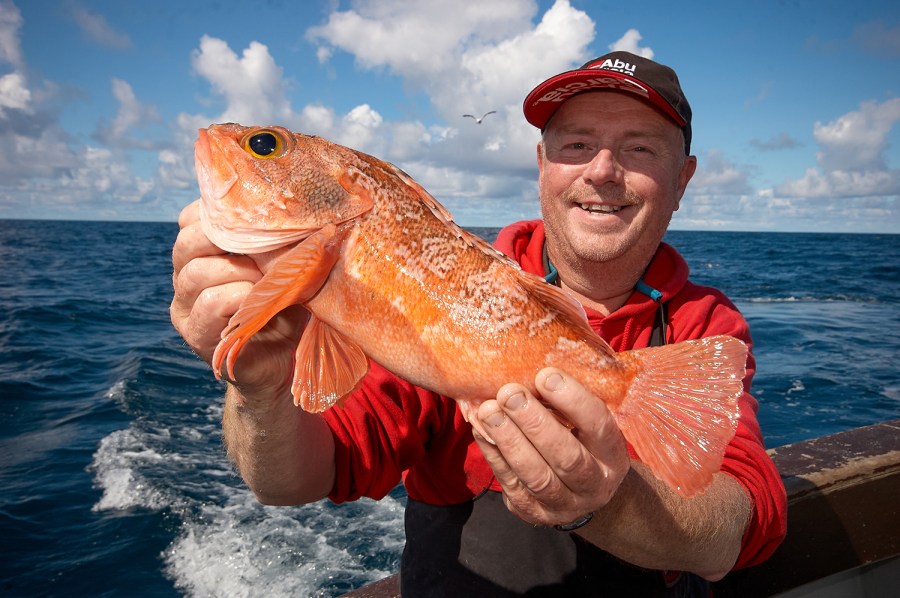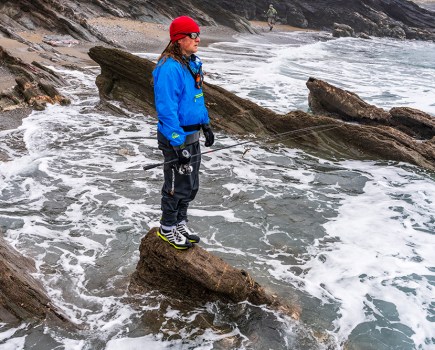Are you up to the challenge of catching the rarities of the sea?
I’m often asked which have been the most difficult to catch when boat fishing, says Mike Thrussell. Based on my own experience, and from conversations with other species hunters, I’ve come up with what I feel are the five most wanted in the UK and Ireland.
Much obviously depends on where you live and what access you may have to other areas that might yield uncommon fish. You have to be realistic too. If you live close to venues where a specific species is caught more frequently, then it’s relatively easy to take advantage of that. For someone living at the other end of the country, logistics become a major consideration. You’ll also need to be prepared to adapt your fishing during everyday trips should opportunities present themselves.
When I book boat trips or organise a few days fishing in areas well away from home, I do some basic research on unusual species that are possible in that area and decide what, if anything, is targetable. Of course, you have to be realistic when picking targets.
An example would be mako shark. There’s been literally a handful caught over the past 45 years or so here in the UK and it’s much the same in Ireland. That is not a realistic target in my opinion. Nothing to stop you having them in mind when tackling up for blues if you’re fishing the south-west of the UK or the south or west coast of Ireland, but it would be a lucky rather than an intentional encounter. The odds are stacked against you.
Torpedo ray, and the once more common but now rare red bream, are two other species that would be almost impossible to specifically target. An example of a fish that’s rarely caught but if targeted becomes far more likely is torsk. These are resident off the north-east coast of the UK, and off the north-west and northern coast of Ireland, also the west of Scotland, but few anglers target them with bottom-fished fish baits or baited pirks.
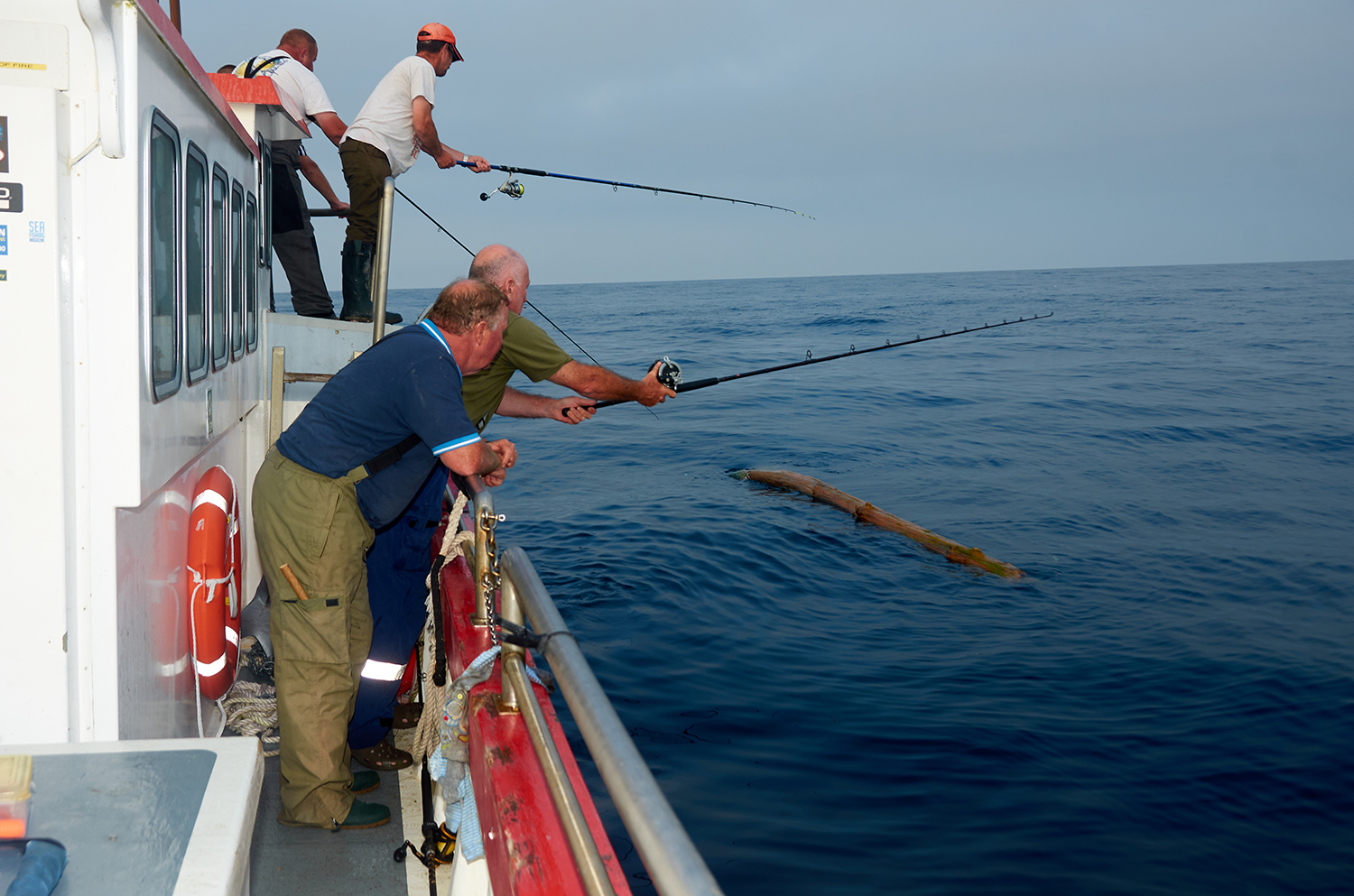
Stone basse are caught around floating debris
PREDICTABILITY
The ones we’re looking for are the species that show up every year, albeit in low numbers, though with an air of predictability. It’s that predictability that opens the door to catching them.
If you’re new to species hunting and want to build a list, my advice is to target the easy ones that are resident on the marks you fish and build up your numbers. When circumstances allow and you are able to travel further, research what’s available and have tackle prepared so that you’re ready to take advantage. If you do it this way, you’ll soon achieve an impressive list.
Here’s my hit list of the five most wanted species I feel are achievable for every species hunter with a realistic chance of success. They are in ascending order. There are others, such as topknot and red-band fish, but these are locally common and not too difficult to catch once you know where they are located.
It’s a major challenge to set yourself, but just such a challenge is red rag to the bull for the keen species hunter. Good luck!
STONE BASSE
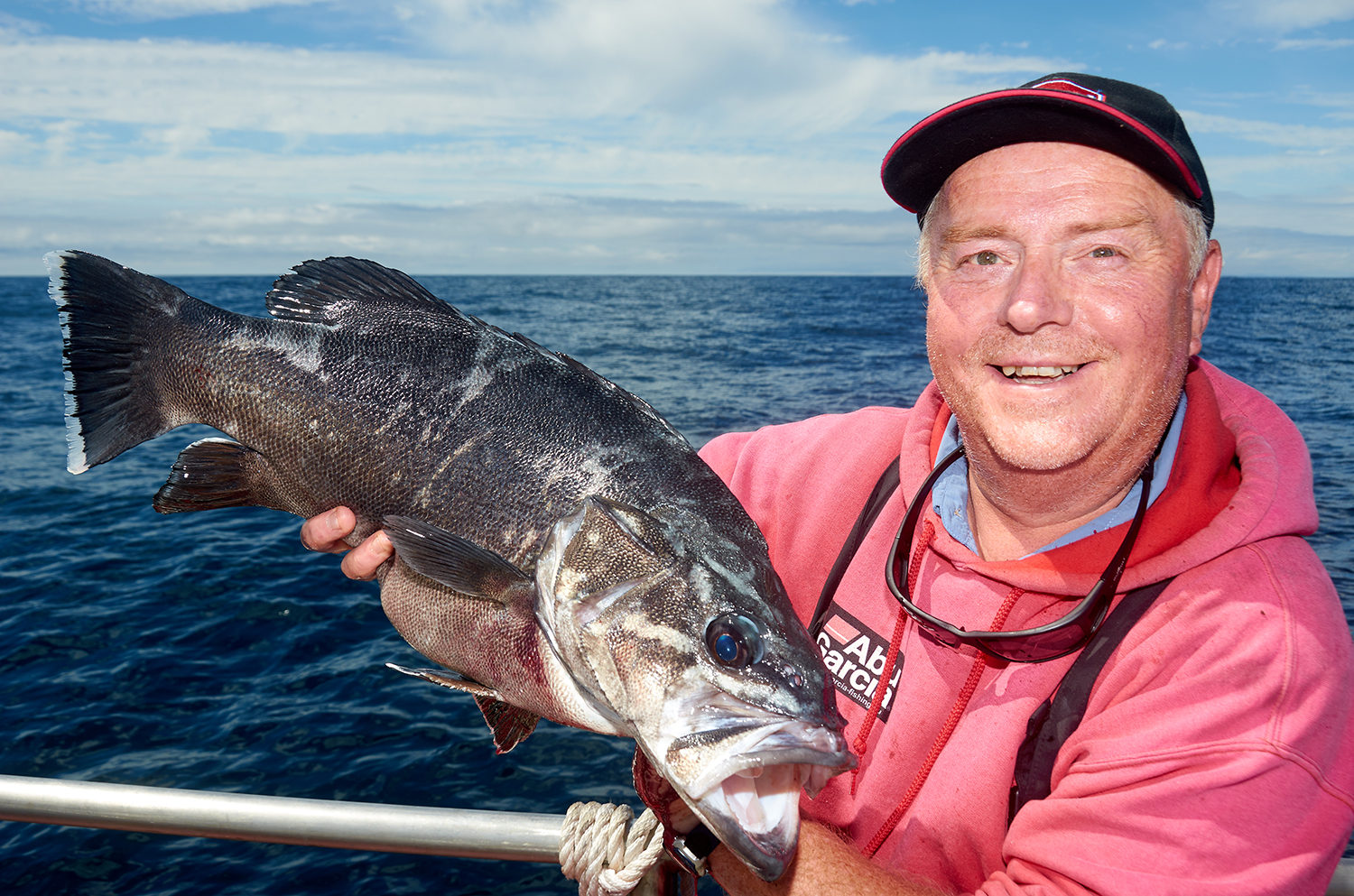
A stone basse Mike caught off the Cork coast
More often called the wreckfish, the distribution range is exaggerated in books by single out of character captures in warmer than usual years.
These are a fish found mostly in the Mediterranean, off North Africa and up through the Bay of Biscay. However, they are caught in high summer, usually late July, August and September off the south-west of the UK, the Channel Islands, and occasionally are reported in the southern Irish Sea after warmer than usual springs followed by a warm summer. They are also caught off the south-western coast of Ireland and seen as far north as Kerry.
Stone basse can grow in excess of 100lb, but the majority caught in UK and Irish waters are juveniles and under 15lb or so, though much bigger ones have been seen.
This species has a distinct habit that makes it very targetable. They sit in small groups of three to 10 fish under floating surface debris and will follow this wherever the ocean currents take it. Typical debris are tree trunks, weed collections, also floating fish boxes or crates. Most skippers are happy to have a few minutes trying around floating debris if you ask, and they need to stand 20-30 yards off the debris and you then cast towards it. Stone basse are not easily spooked, so don’t worry too much about this.
TACKLE & TACTICS
A longer rod such as a Euro-style Tipster around 11ft with a 5000 to 6000-sized fixed-spool reel loaded with 30lb braid and a 30lb fluorocarbon shockleader allows you to cast a three-inch body section of mackerel a fair way. Aim to drop it tight to the floating structure.
The stone basse will hit the bait as it drops through the water column. Let them take a little free line before striking. Hook size should be a strong and sharp, size 4/0 Viking pattern.
Another opportunity often missed with stone basse is that they will stay under the boat and you’ll never know they are there. When shark fishing on the drift, or when drift fishing over ground for general species, try dropping a few small bits of mackerel over the side of the gunnel now and then and watch. A stone basse can’t resist this and will dive out, grab the baits, and dart back under the boat again.
That same tackle described is perfect for dropping a bait over the side tight to the gunnel, and the length of the rod allows the fish to be played under the boat as they will be reluctant to leave it in the early stages of the fight.
BLUE-MOUTH
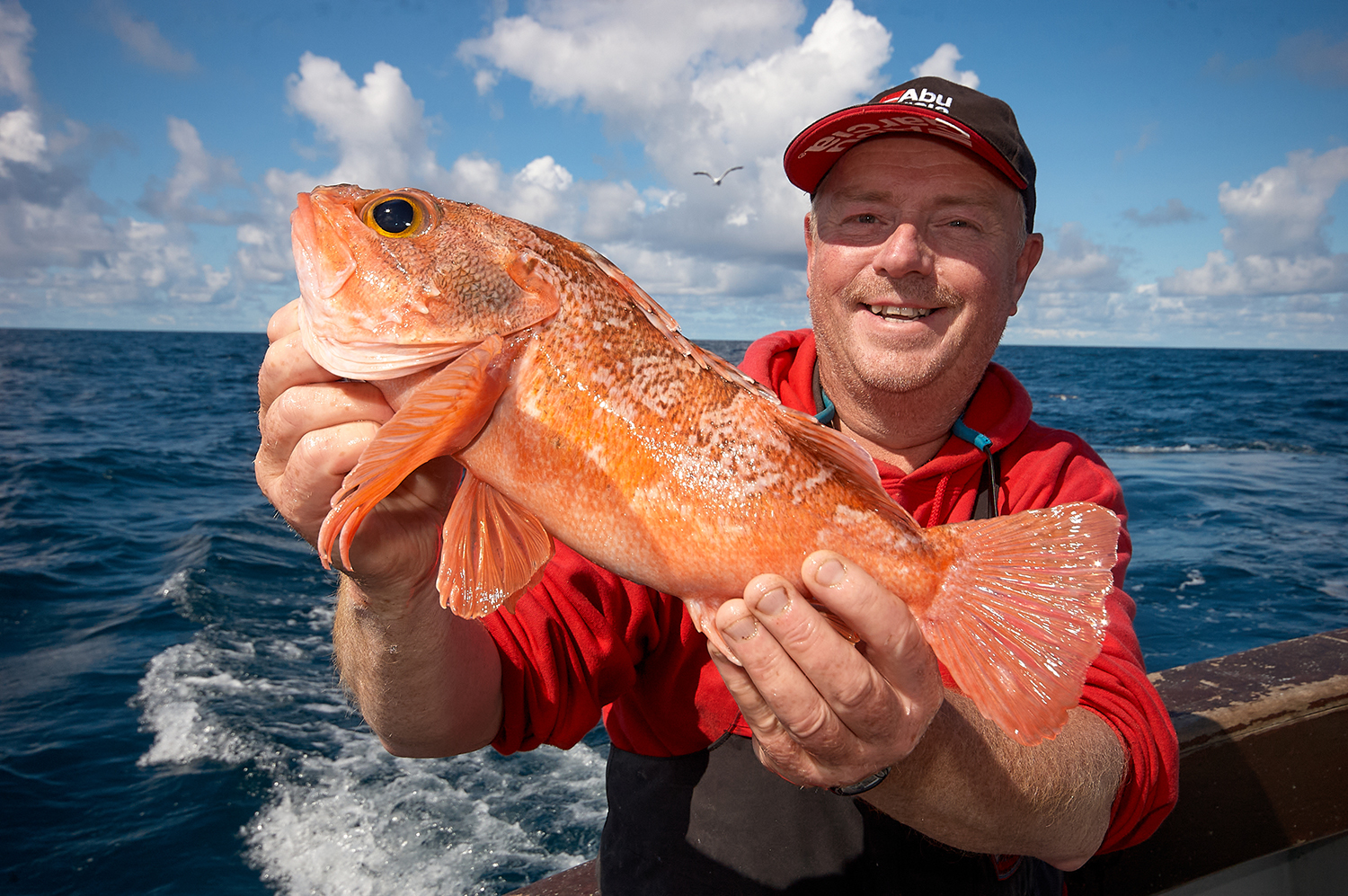
Mike and a rare bluemouth
Blue-mouth, a member of the redfish family, inhabit the lower continental shelf grounds off our western coasts, but they are caught in depths shallower than that given in the books, sometimes in just 200 to 300 feet.
What you’re looking for is a port that has that depth of water in close proximity to a sudden shelving towards the continental shelf. This occurs off the south-west of the UK, off western Scotland, but especially off the west coast of Ireland from west Cork up to Donegal and in Kerry off Cahersiveen and off Killala Bay in Mayo. They can be caught all-year round, but obviously the summer gives the best weather access.
Another thing the scientific books are inaccurate on is that blue-mouth feed only over mud and sand. The blue-mouth I’ve caught from several areas have always been in close proximity to, or right over rougher reef ground. They love to work the rising rock pinnacles that lift up off the floor and tend to concentrate more around these.
These are a small fish rarely exceeding 4lb in weight, but they are a predator eating mainly shrimps and small fish. They are usually found either hard on the seabed structure when the tide is running but will lift up off the seabed 10 feet or more when the tide run slackens.
TACKLE & TACTICS
From an angling point of view, their weakness is that they are attracted to anything luminous. The best rig is a simple three-hook luminous Kilmore Killer rig with hook sizes around size 1/0 to 2/0. Bait the hooks with strips of white mackerel belly cut about two-inches long and a half inch wide.
Another good tip for this fish is to use a luminous green or yellow lead weight, which enhances the visuality of the rig and draws in the fish. Once you find blue-mouth, they are easy to catch.
HAKE

A deep water hake
Hake merit their inclusion as few anglers have caught one, due to their preference for very deep water, generally in excess of 500 feet and living towards the mid and lower continental shelf.
However, in summer from June onwards, but especially in August and September, smaller hake up to 10lb or so will venture into shallower water and can be caught in depths around 300 feet.
They are found mainly off the south-west of the UK, sometimes in the deeper parts of the Irish Sea, off the west and north of Scotland, and occasionally in the northern quarter of the North Sea. Some of the best areas are off Cornwall, also off the south and west coast of Ireland, especially the Cork and Donegal coast.
TACKLE & TACTICS
This is another fish that responds well to luminous lure rigs. A simple set of Hokkais or Kilmore Killers baited with strips of mackerel is ideal for the smaller fish with hooks between size 1/0 to 4/0. For the bigger fish, try a two-hook rig with 12-inch hooklengths made from 40lb fluorocarbon or 60lb mono to withstand their sharp teeth. Slide on a three-inch luminous green or white muppet above the size 4/0 hook.
If you use swivels between beads and crimps, the free rotation of the hook trace reduces tangles at depth and allows the simple tying of the fluorocarbon hook trace to the swivel.
Hake like relatively clean ground, but also favour flat broken ground with patches of boulders and low-lying rocks. They will lift off the floor to intercept food fish, but your best chance is when drifting and keeping the baits in contact with the seabed all the time. Occasionally, try lifting the rod tip and then releasing a little line to give the baits, and the luminous Hokkai or muppet, a bit more movement.
CUCKOO RAY

Mike with a cuckoo ray
It may surprise some that I put the cuckoo ray in the five most wanted but having spoken to hundreds of anglers over the years, very few can claim to have caught one.
They are found all around the UK and Ireland but are more frequent south of the British Isles. The books say they can be very localised, yet nowhere I’ve been are they noted as being caught frequently. This is surprising as they can sometimes be found in shallower water around 100 feet deep, but more commonly in depths of 250ft to 250-600ft. They like clean, sandy bottoms often with a mix of shell grit.
These rays don’t grow much over 6lb in weight and a 3lb fish is a very good one. They have distinctive black rings tinged with yellow in the middle of wings.
TACKLE & TACTICS
A simple two-hook rig with 25lb fluorocarbon hooklengths about 20 inches long and ending in a size 2 to 1/0 Aberdeen hook works best. The lower hooklength needs to be tight behind the lead weight to keep the bait on the seabed. The top hook comes into play when drifting and letting off plenty of line.
They like white belly strips of mackerel cut thinly but some three-inches in length and hooked just once through from the flesh side and out through the skin at one end. Again, try adding a luminous green bead or two above the hook which can increase your chances in deeper water.
MEGRIM
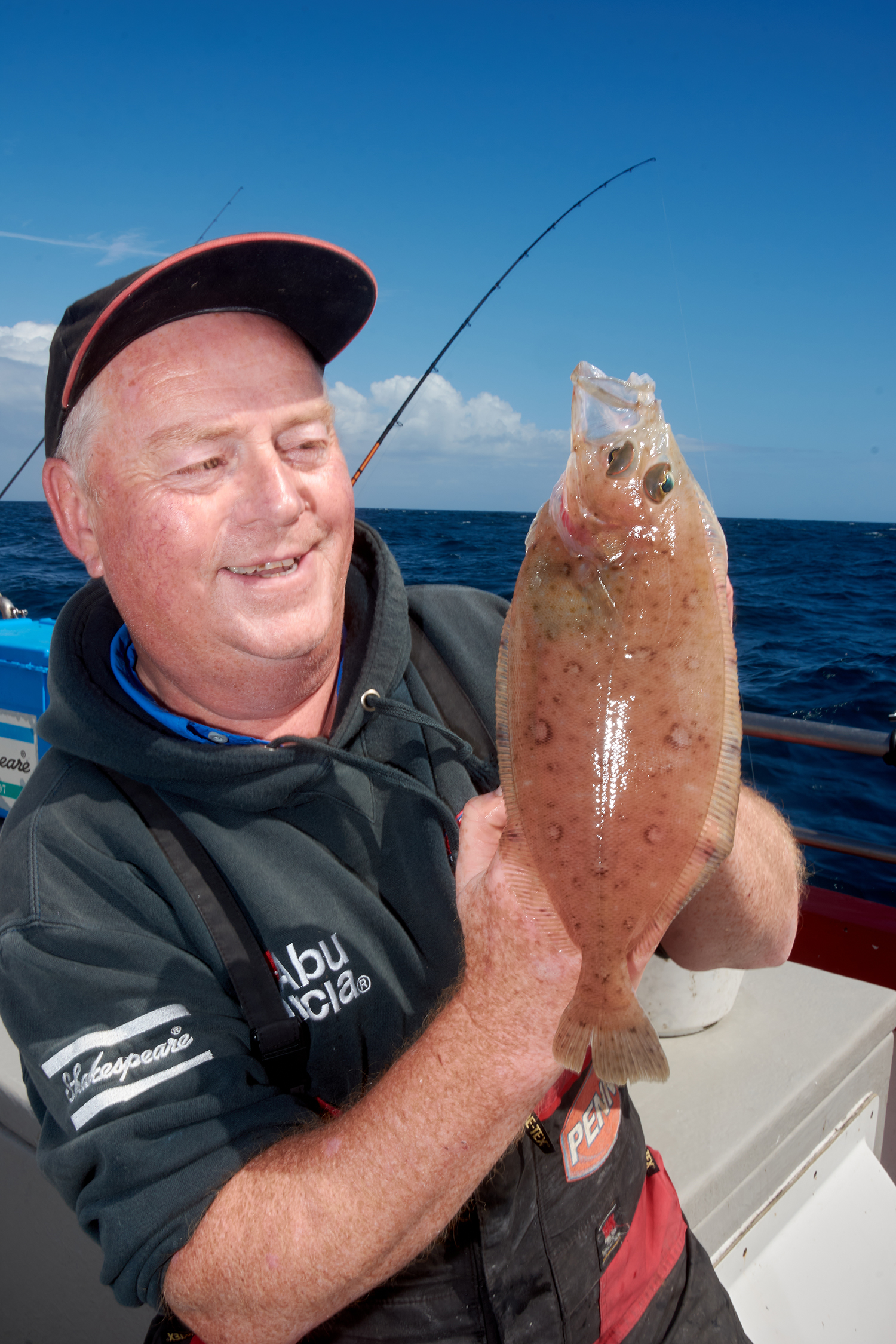
Mike with an elusive megrim
This was a species I really struggled to catch. There are two types of megrim, the commonest for rod and line anglers is caught in depths of at least 250-feet and usually more over muddy or sandy bottoms.
They also like clean patches among broken ground and also choose to rest on gradually lifting banks of sand and shell.
The four-spot megrim is found much deeper in depths closer to 1,000 feet, so is not really a viable target. It is easily distinguished from the more common megrim due to having two conspicuous spots at the rear of the dorsal and anal fins adjacent to the root of the tail, hence the name four-spot.
The distribution is predominantly along the western-facing coasts of the UK including the Cornish coast and the Irish Sea, also the west and north of Scotland. It is resident in the northern half of the North Sea, but in lower numbers. It is also found around the whole of Ireland but is mostly caught in the deeper waters of the south-west and western coasts from Cork to Donegal, also Northern Ireland.
TACKLE & TACTICS
This is another fish eater, exceptionally growing to 4lb, but a good meg is anything over 2lb. They are best targeted with a two-hook rig with 15-inch hooklengths of 20lb fluorocarbon. Their mouths can extend out of proportion to their body size but stick to smaller hooks such as size 2 or 1 Aberdeens.
It’s a common trait of these deeper-dwelling fish, but the megrim also responds to luminous green, so adding one or two small 3mm lumo beads above the hook will increase the catch rate. Again though, they will also take luminous Hokkai rigs armed with smaller hooks and baited with fish strips.
Baits are simple mackerel belly strips cut about two inches long and very thin to induce more movement. Hook the belly strip just through one end from the flesh side and then through the skin to keep the hook point well clear. If you double the hook through the strip, it will tend to pull down at the hook end and then spin unnaturally.
This fish naturally hugs the seabed, so staying in contact with the seabed all the time is important. However, try to choose lead weights just heavy enough to do that. Lifting a lighter lead and dropping the rig back down by releasing a few feet of line is a good tactic every minute or so because it lifts the bait, which then flutters down. This is often seen or sensed by the megrim and induces an attack.
For more fishing advice and species information, head to our Tips & Tactics section or pick up a copy of Sea Angler

